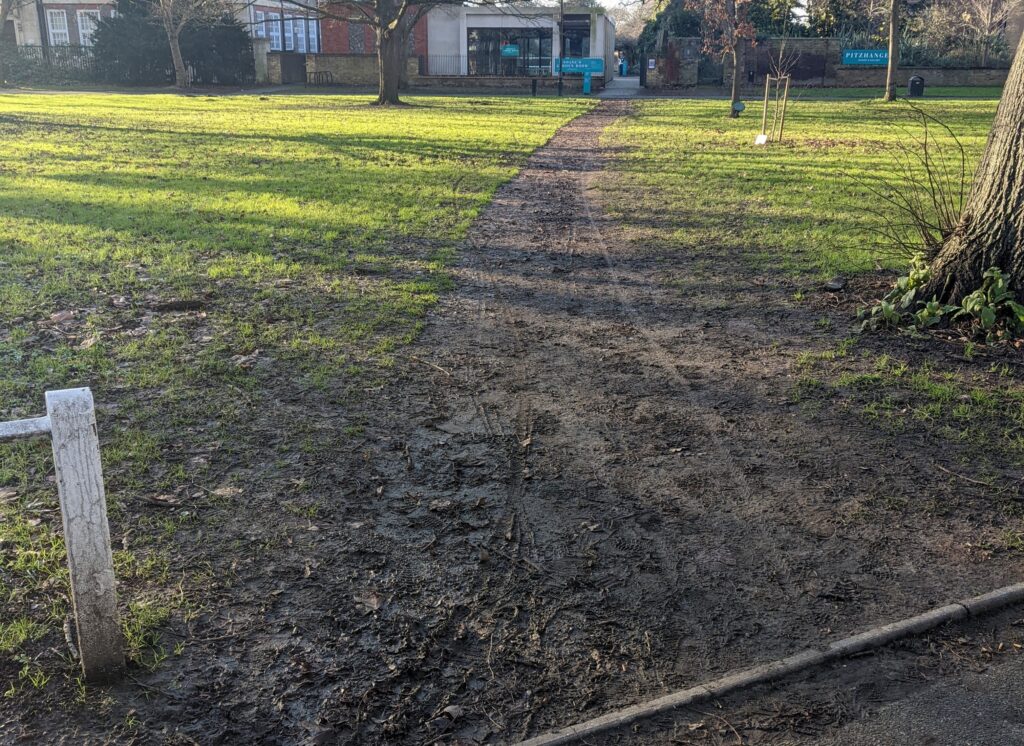Meet learners’ needs by following language desire paths
If we want to meet learners’ needs, then try following their conversations and teach the language they desire rather than just what we set out to teach.

I was out walking the other day and it being somewhat damp and muddy, I decided to stick to the paved pathway rather than take this more direct route which I have now discovered is called a ‘ desire path’. But as I did so, I started thinking that the this kind of path, which you see all over the place, could be a kind of metaphor for teachers when it comes to lesson planning and the use of coursebooks. It’s not that preparing to teach certain language or do certain things in class is a bad thing any more than urban planning is bad. People DO use the paved / planned routes and students may well use that language we have taught and stick to the tasks we have set. However, there will inevitably be times that students have their own desire paths.
Language needs go beyond what we planned
As teachers, we can be sometimes like the severe park warden shouting at walkers to keep off the grass and not allowing them to walk over to smell the flowers. We might tell students off for getting side-tracked or using alternative forms that we didn’t want them to use, which may be quite frustrating for students. Instead, we should see these unplanned for interactions as new possibilities that show us other areas of language we can teach – language students have shown a desire to use.
Our Teacher Development courses are very much about understanding this twin track of how we can meet learners’ needs – or wants – through both planned and ‘reactive’ teaching. Teacher training courses can sometimes give too much time to sticking to the script and not enough time to developing the skill of noticing and teaching emergent language.
As we discuss in our course on mediation, to some extent students themselves can address their needs by googling new language as they start along these different routes – or using their mother tongue and someone else supplying the words. However, it’s always good if teachers can also notice these moments and make visible this new language to all the students in the class to learn and possibly use. We might then even repeat the whole task or take a moment to retrace this new path of conversation that has opened up, so that it becomes a bit more clear and firm.
Language change is like this

We could also see these desire paths as metaphors for language change. We could see the paved path as the “standard model” of language, but then one day, someone decided that this standard model just didn’t meet their needs – that there was a route that fits better with what they wanted to say.
Asked whether they were enjoying something they were doing, our radical user decided that I’m loving it actually described the situation and their feelings better than I love it. Then someone hearing this for the first time, like seeing someone transgress by walking straight across the grass, thought that it actually makes complete sense. They then start using I’m loving it themselves, and it turns out others follow their lead and before you know it, it’s become an established usage, albeit one which some might still tut at. And perhaps because of those complaints, in certain weathers / contexts, we may decide it’s best to avoid using the path / language in favour of something more conventional.
Having said that, when a path like this becomes so frequently used, sometimes the local council may decide to accept it as a route and remodel the area so it becomes paved – a bit like a grammar book or Royal Academy of language (if your language has such a thing) bowing to pressure and accepting that love is not a ‘stative’ verb – or at least accepting that stative verbs can in fact be used in a progressive forms. So the last way to meet learners’ needs and wants would be to not to correct language based on rules that have changed, if they were ever true in the first place.
For more insights into grammar check out our book Grammar nonsense and what to do about it.
Leave a Reply